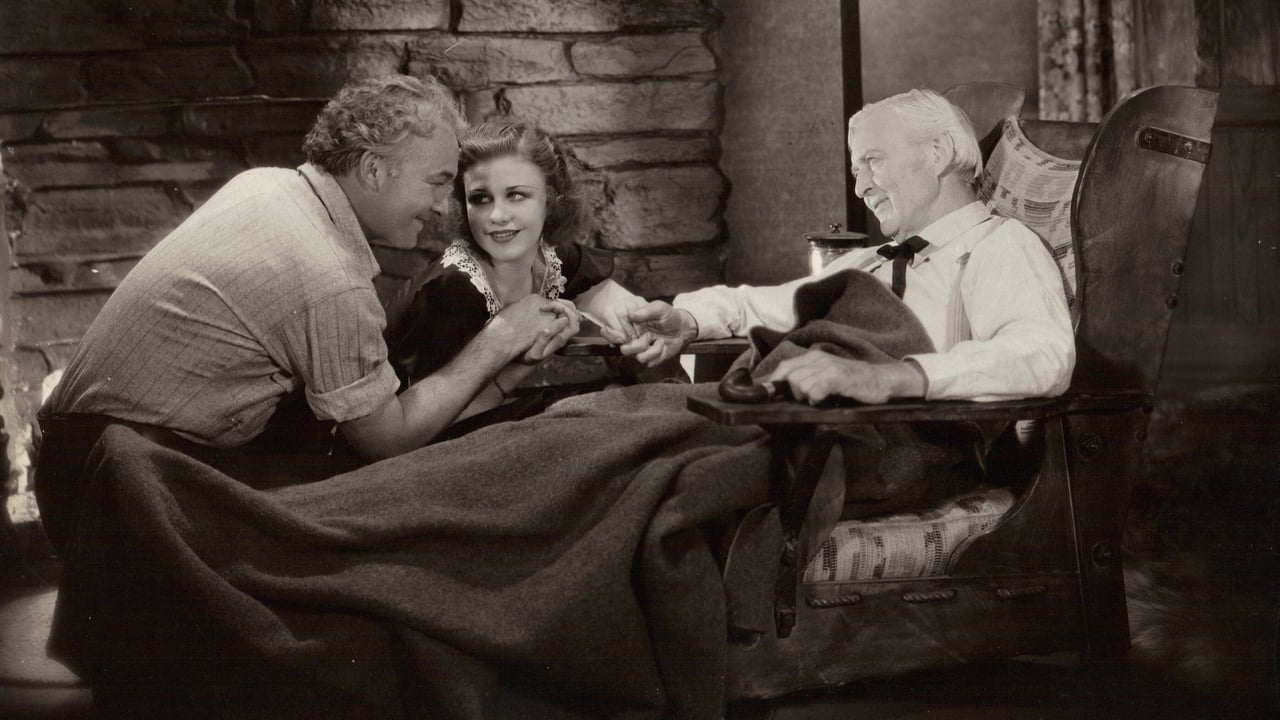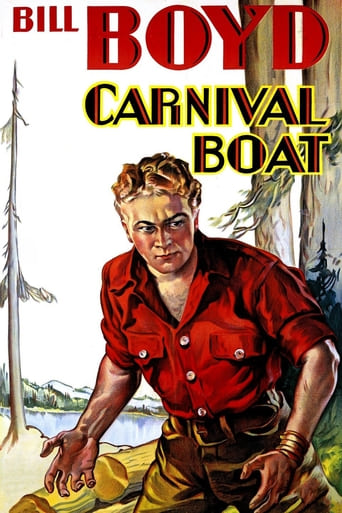

Probably the best thing about CARNIVAL BOAT is the location filming as director Albert Rogell actually took the crew up to logging country for the bulk of the shooting. Otherwise it's your basic action programmer with some good stunt work and some tedious comic relief from Edgar Kennedy and Harry Sweet. William Boyd, later Hopalong Cassidy, stars as the lumberjack torn between father and sweetheart (Ginger Rogers). This may be the low point of Ginger's film career. It was her third Hollywood film (after five in New York), all made for Albert Rogell at RKO/Pathe. She seemed stuck in a downward trend (Pathe really didn't make any good films so far as I know) so she asked out of her contract and Pathe was more than happy to grant her the favor. A couple of years of freelancing and she signed again with RKO, soon to become a star.
... View MoreCarnival Boat (1932)** 1/2 (out of 4)Jim Cannon (Hobart Bosworth) wants his lumberjack son Buck (William Boyd) to take over his job when he retires but the son just isn't really going for it. A problem happens between the two when the son falls in love with showgirl Honey (Ginger Rogers).CARNIVAL BOAT was a low-budget movie from RKO that was probably playing under a much bigger film and was quickly forgotten about by the public. Even film buffs have forgotten it, which is understandable considering there's nothing "classic" about it but at the same time there are some pretty interesting things that make it worth viewing.The best thing about the picture is the lumberjack setting with us getting to take a look at the type of equipment that was used back in the day by these loggers. There are some very fun scenes built around this including one with an out of control train. The highlight comes towards the end when a bunch of logs jam up a dam and we get a very fun action scene.I thought the three leads were quite good in their roles with Bosworth stealing the picture as the cranky old man. Edgar Kennedy and Marie PRevost are also on hand in small supporting parts. At just 61 minutes there's certainly nothing ground-breaking here and the love story is quite predictable but it's still worth watching.
... View MoreAfter performing in five feature films and four short subjects for Paramount at its Long Island, NY, studios, by day, and performing on Broadway by evening, Ginger Rogers heads to Hollywood, in 1931, to sign with Pathé Studio, a forerunner to RKO-Radio Pictures. "Carnival Boat" becomes Ginger's third at Pathé, and her first feature film of 1932.Although a pre-platinum Ginger receives star billing, and her character's festive entertainment vessel the title, most of the action of this film transpires at a lumber camp, with much conflict occurring among lumberjacks for the succession of power pending the retirement of Jim Gannon (Hobart Bosworth).Well, an abrasive Hack Logan (Fred Kohler), for one, places himself in contention for the foreman position and, especially, in contention against Gannon Jr. (William Boyd), whose father, Jim, stands in contention against Jr.'s fancying Honey (Ginger Rogers), the star performer of the "Carnival Boat," a steamship paddle-boat, which floats along the waterway and docks near the lumber camp.Fighting for the top lumbering position begins with the saws and escalates onto the roofs of railroad cars, piloted by a runaway locomotive down the mountain track, which certainly provides compelling footage, which certainly stands the test of time to captivate audience attention.Honey, all the while, stands by Jr., who continues to champion their romance, as (Ginger) sings, "How I Could Go for You" aboard the entertainment vessel, where a good time is had by one and all except for the disapproving Sr., who seems prepared to cry "Timber!" at any given moment.Marie Prevost has a role as "Babe," with Edgar Kennedy as "Baldy," a lumberjack. William Boyd, the film's leading man, doesn't seem to appear anywhere near the credit list here although his moniker does roll across the screen below Ginger's.
... View MoreUp and coming star Ginger Rogers takes a distinct second place to the special effects in a story about the men in a logging camp and the women on a Carnival Boat they should avoid. Ginger's partnered with William Boyd who was not yet Hopalong Cassidy.Boyd is the son of the camp foreman Hobart Bosworth who is feeling the effects of his age. He'd like to see his son succeed him as foreman of the camp, but Fred Kohler has an impressive record for the job and he's not squeamish about what he has to do for that promotion.At the same time Ginger works a Carnival Boat which provides the men of the woods some amusement and like the saloons of the old west relieves them of their wages. Boyd likes Ginger, but Bosworth doesn't feel she's a suitable bride for his son.I think you can probably figure out where and how this is all going to end. The plot is trite, but the special effects that include a runaway logging train and a river log jam are really first rate for their time. It makes Carnival Boat something to see if one can.
... View More